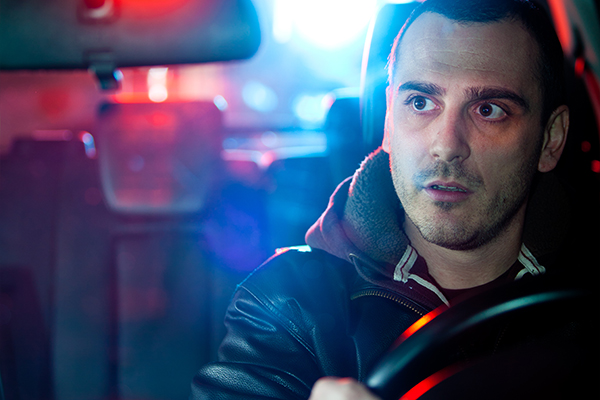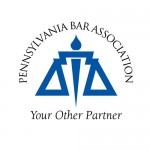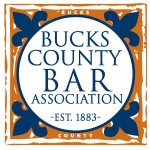Sobriety Checkpoints & Roving Patrols
The goal of DUI sobriety checkpoints and roving DUI patrols are to Pennsylvania roads safer.
Pennsylvania’s blood alcohol content (BAC) limit is 0.08% for general motorists, 0.04% for commercial drivers and 0.02% for drivers under the age of 21. The PA law also includes controlled substances such as marijuana, cocaine, inhalants and other intoxicants.
What are DUI Sobriety Checkpoints?
A sobriety checkpoint is a law enforcement procedure wherein police officers systematically stop vehicles at selected locations to briefly observe drivers for behaviors normally associated with alcohol or drug impaired drivers.
Sobriety checkpoints are designed to create the perception that apprehension of someone driving under the influence is likely. The goal of the sobriety checkpoint is reducing the number of alcohol and drug related fatal and serious crashes, and to reduce the number of DUI drivers on Pennsylvania’s highways.

Sites utilized for sobriety checkpoints are selected by the chief of police or their designee and should be based on the following criteria:
What are Roving DUI Patrols?
A Roving DUI Patrol is a police operation where uniformed officers participate in a directed patrol specifically designed to deter and detect the impaired driver and to enforce traffic regulations, stop vehicles for traffic and equipment violations. The goal of any roving patrol is to detect and deter. Roving patrol officers remove impaired drivers and thus reduce alcohol-related crashes and fatalities.
What are DUI Detection Cues?

Phase I: Vehicle in Motion
Phase 1 encompasses the observations by the officer as the vehicle travels on the highway or traffic way. The officer may observe moving or equipment violations, or may have some other reason which draws attention to this vehicle, and for which the officer may stop the vehicle.
Researchers interviewed officers from across the United States and developed a list of more than 100 driving cues that have been found to predict blood alcohol concentrations, or BACs, of 0.08 percent or greater. The list was reduced to 24 cues during three field studies involving hundreds of officers and more than 12,000 enforcement stops.
The driving behaviors identified by the officers are presented in the following four categories:
1. Problems Maintaining Proper Lane Position
- Weaving
- Weaving across lane lines
- Straddling a lane line
- Swerving
- Turning with a wide radius
- Drifting
- Almost striking a vehicle or other object
2. Speed and Braking Problems
- Stopping problems (too far, too short, or too jerky)
- Accelerating or decelerating for no apparent reason
- Varying speed
- Slow speed (10+ mph under limit)
3. Vigilance Problems
- Driving in opposing lanes or the wrong way on a one-way street
- Slow response to traffic signals
- Slow or failure to respond to officer’s signals
- Stopping in lane for no apparent reason
- Driving without headlights at night
- Failure to signal or signal inconsistent with action
4. Judgment Problems
- Following too closely
- Improper or unsafe lane change
- Illegal or improper turn (too fast, too jerky, too sharp, etc.)
- Driving on other than the designated roadway
- Stopping inappropriately in response to officer
- Inappropriate or unusual behavior (throwing litter from the car, arguing with another motorist or generally being disorderly, etc.)
- Appearing to be impaired

The cues presented in these categories predict that a driver is DUI at least 35% of the time. For example, if you observe a driver to be weaving or weaving across lane lines, the probability of DUI is more than .50, or 50%. However, if you observe either of the weaving cues and any other cue listed, the probability of DUI jumps to at least .65, or 65%. Observing any two cues other than weaving indicates a probability of DUI of at least 50%, although some cues, such as swerving, accelerating for no reason, and driving on other than the designated roadway, have single-cue probabilities greater than 70%. Generally, the probability of DUI increases substantially when a driver exhibits more than one of the cues.
Phase II: Personal Contact
During this phase the officer can observe the driver in a face-to-face situation.
The officer may observe the physical appearance of the operator or physical evidence, or hear evidence of intoxication through slurred speech, inconsistent responses to questions and other sounds. In addition, he/she may detect other evidence by the sense of smell, such as the odor of an alcoholic beverage or burning marijuana.
During this personal contact the individual is not under arrest. Thus there is an opportunity to ask questions to determine if this person is capable of driving a vehicle safely upon the roadway.
NO MIRANDA WARNINGS ARE NECESSARY. Ordinary traffic stops do not involve custody for the purposes of Miranda

Phase III: Pre-Arrest Screening

Psycho-Physical Testing
(Standard Field Sobriety Tests)
- Horizontal Gaze Nystagmus
- Vertical Gaze Nystagmus (drug detection)
- Tracking
- Pupil Size
- Walk and Turn
- One Leg Stand
Preliminary Breath Testing
Breath testing must be taken on a device approved by the Pennsylvania Department of Health. Its sole purpose, under statute, is to assist the police officer in determining whether or not a driver should be placed under arrest for DUI. However, readings are not admissible, other than pass/fail.
Are DUI Sobriety Checkpoints Legal?
The U.S. Supreme Court ruled in 1990 that states had a compelling interest in eradicating drunk driving, and that public safety concerns outweighed any concerns about “intrusion” into drivers’ privacy. The challengers in the case had claimed that these checkpoints were unreasonable searches under the 4th Amendment, but the Court found them reasonable under the circumstances. Checkpoints reduce alcohol-related crashes by about 20 percent, according to a U.S. Centers for Disease Control report combining the results of 23 scientific studies.
If you have been charged with DUI in Pennsylvania, contact the Bucks County law office of Keith J. Williams today to discuss your options with an experienced DUI attorney!
If you have been charged with DUI, call Keith J. Williams Law today at 215-340-1134 for an aggressive, strategic and affordable defense!









